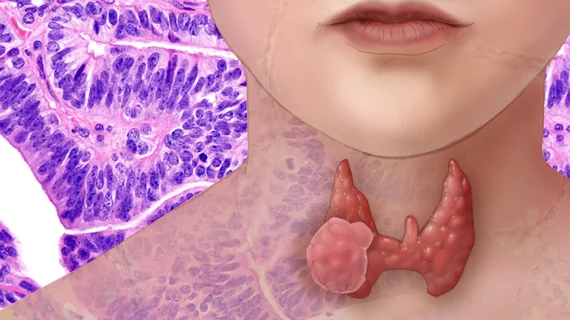Machine learning models can be trained to extract immunohistochemical (IHC) characteristics from the imaging results of patients with suspected thyroid nodules, according to new research published in the American Journal of Roentgenology. These characteristics can be used to improve thyroid nodule diagnoses.
Learning from IHC features is so important, the authors explained, because many patients today have unnecessary thyroidectomies. And though CT scans can “provide valuable information” to providers, they miss “hidden information” that could lead to better patient care.
“When IHC information is hidden on CT images, it may be possible to discern the relation between this information and radiomics by use of texture analysis, with which IHC results can be predicted in a radiomics-based model,” wrote Jiabing Gu, of China’s Shandong First Medical University and Shandong Academy of Medical Sciences, and colleagues. “The aim of this study was to assess whether texture analysis can be used to predict the IHC characteristics of suspected thyroid nodules.”
The authors explored data from 103 patients with suspected thyroid nodules who had undergone thyroidectomy and IHC analysis from January 2013 to 2016. All patients underwent CT imaging before their surgery, and the images were imported into a 3D slicer for feature extraction. The IHC indicators that were used were cytokeratin 19, galectin 3, thyroperoxidase, and high-molecular-weight cytokeratin 34βE12. More than 800 radiomic features were processed, with 86 being used to build the machine learning model.
Overall, the team developed radiomics models with an accuracy of 81% or higher for predicting the presence of cytokeratin 19, galectin 3 and thyroperoxidase based on CT findings. The team’s predictive model for high-molecular-weight cytokeratin, however, had a lower accuracy and could not be validated.
The authors did note that their radiomics models “should be externally validated,” but concluded that this work “may be used to for identifying benign and malignant thyroid nodules.”

